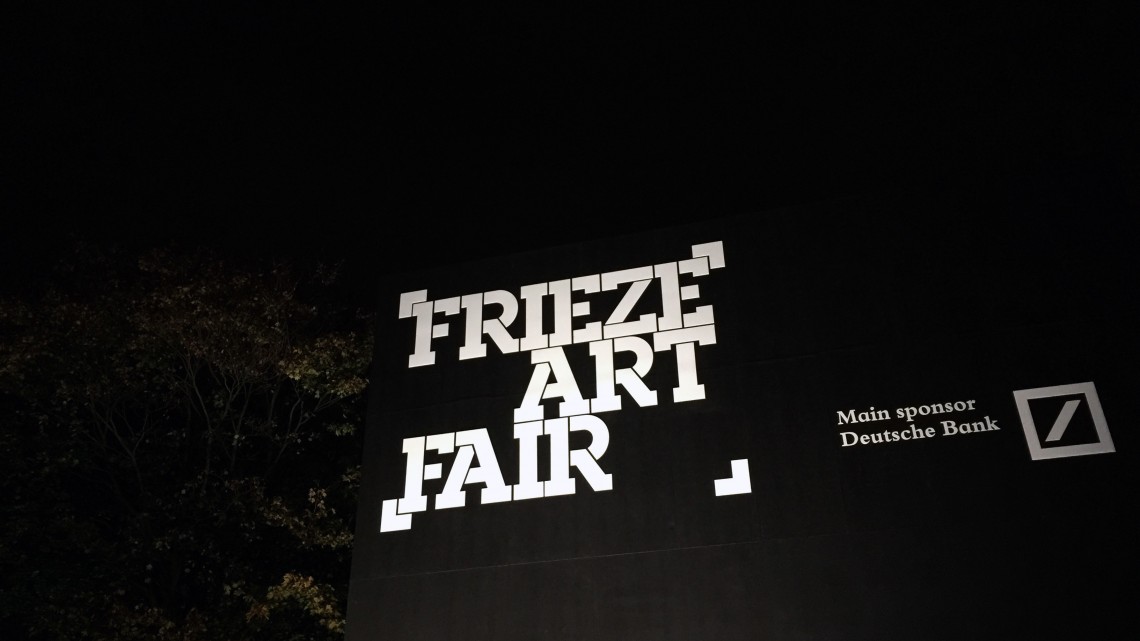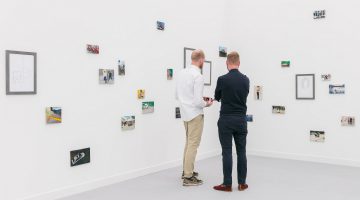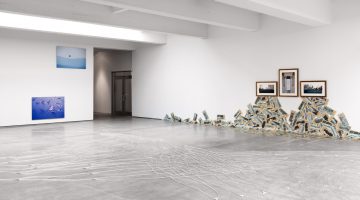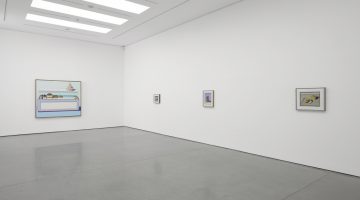Frieze Art Fair 2015
October 14 – 17, 2015
Regent’s Park, London UK
As London makes its gentle autumnal transition from rich green to dark gold, last weekend saw the fair come to London town. With the tent erected in the usual spot in Regent’s Park and much like persistent ants at the summer picnic, the art gaggle swarmed and quickly devoured everything, leaving behind a littering of ideas, discussions, likes, and the hashtag #FriezeArtFair2015.
The circus that is Frieze Art Fair has just celebrated its 13th birthday and unlike your number-dwindling local circus, Frieze Art Fair is getting bigger, better, and more powerful every 365 days. With 164 galleries taking part from 27 different countries and the introduction of Frieze Masters and the Frieze Sculpture Park in 2013, this fair is slowly creating more than just a four-day shopping spree for the wealthy 1%. Frieze now makes October in London a creative cultural haven, with everyone putting on their best while the art world is in town. And Frieze Art Fair itself is simply the amuse bouche of it all.
As someone who has been attending Frieze, intermittently for 10 years, our relationship has not been easy. I have been through what I believe is the natural evolution of emotions towards Frieze. I, like many, started as a naïve cynical student questioning the reason for this hollow hullabaloo. I then moved on to the simple knee-jerk reaction of dismissing the event altogether for a couple of years, unwilling to accept its reason in my art world. And now I write this as a man who understands he has been a fool: I misunderstood. To judge Frieze as an overwhelming choreographed group show is my own mistake. You must judge Frieze Art Fair for what it is: An Art Fair. Frieze is essentially a fundraiser for the arts, so you and I, the viewer, can spend the rest of the year visiting, enjoying and dismissing galleries for free. I think, like many, I have expected too much from Frieze in the past, when in actual fact Frieze offers more than it has to.
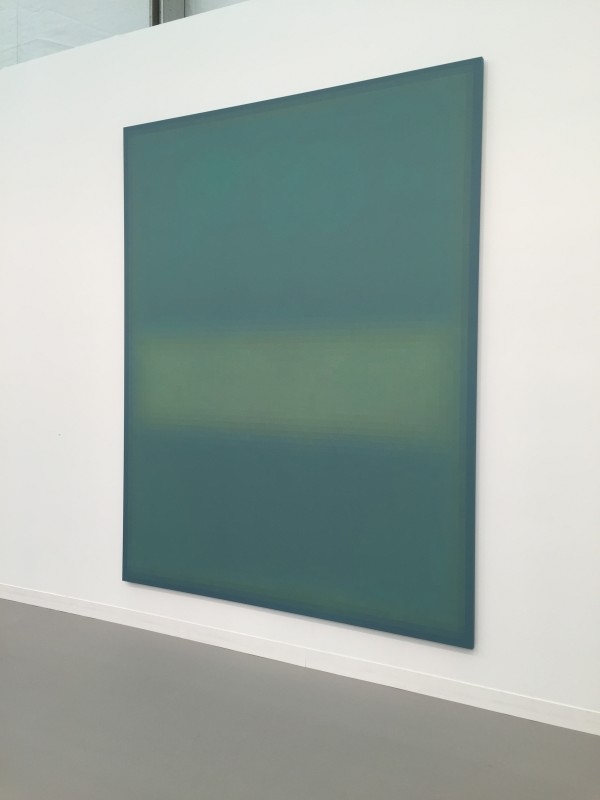
Mark Flood. “Incorrect Scheme,” 2015. UV ink on canvas, 274.3 x 214 cm. Photo by Robert Strang
The winner of this year’s ‘Stand Prize’ was Stuart Shave/Modern Art with the displaying of six large Mark Flood-pixilated Rothko’s alongside Yngve Holen’s series of sculptures comprised of Plexiglas on top of miniature airplanes on top of washing machines. The union between these works in the space shows the current taste that can be found throughout the fair but only at Stuart Shave/Modern Art is it celebrated within the whole cubicle. These works are desperately trying to be rich in culture, but feel deliberately limited by our age of art in a disposable digital era.
London-based gallery Arcadia Missa created the most immersive stand within the whole fair. The booth had a ‘shoes off at the entrance and no photography inside’ policy. Then, as you walk down a small corridor, which is decorated on either side with dirty purple ruched polyester fabric on the walls, you turn a corner. Around this corner you are presented with a television playing The Annals of Private History (2015), a work of Amalia Ulman. This engaging video consists of a fictitious history of the diary and how it stands as a symbol for thoughts and what must be private, what can be public and roles in society.
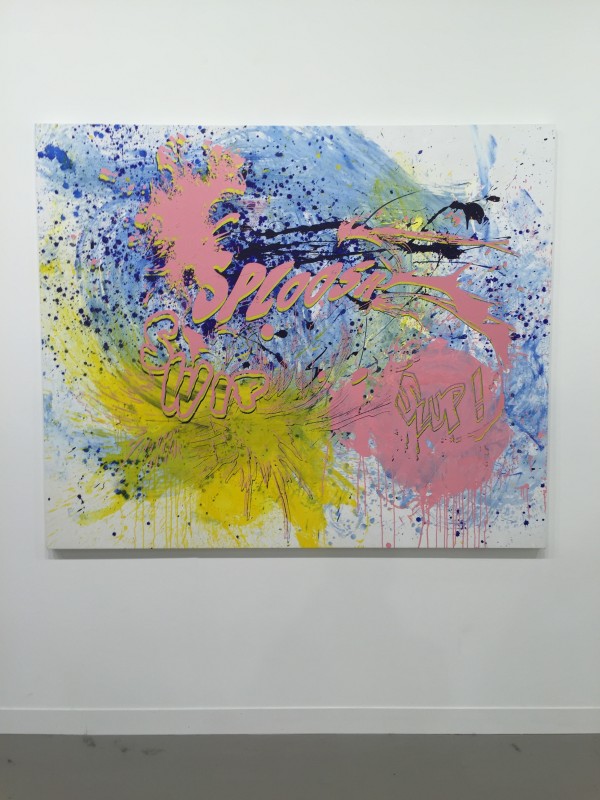
Christian Marclay. “Actions: Sploosh Swip Slup (No.2),” 2014. Screen print, 158cm 190.5cm. Photo by Robert Strang
Of course, the big players of the art world threw their weight around; like Sadie Coles HQ dedicating a solid yellow wall to five Sarah Lucas text works, happily harking back to her show at the British Pavilion last summer at the Venice Biennale. While White Cube offered a stunning Christian Marclay painting and Sprüth Magers gave a selection of creepy yet tremendous Ryan Trecartin framed images.
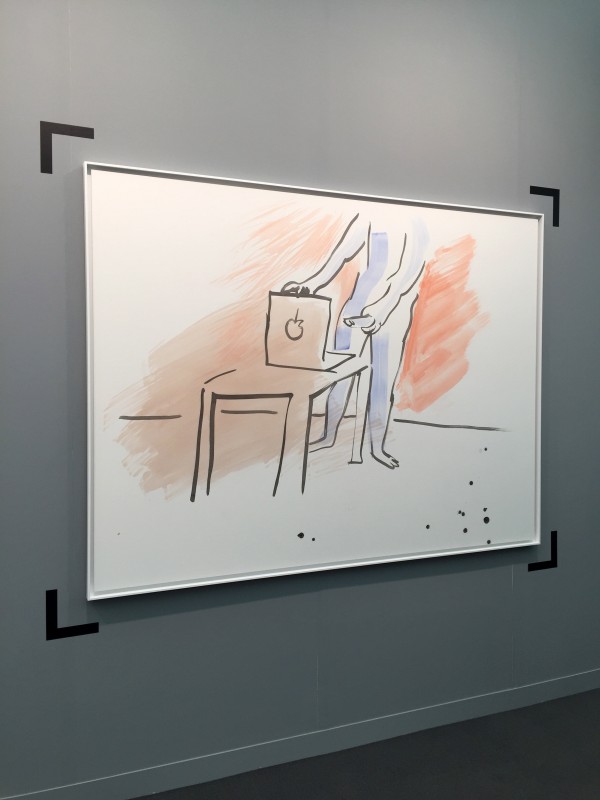
Installation view of Camille Henrot at Kamel Mennour. Photo by Robert Strang
Galerie Kamel Mennour offered French artist Camille Henrot a solo presentation and she created a wonderful grey-walled installation consisting of canvases with line pastel painted figures, all in the midst of private activities or after being shamefully caught. Galleria Lorcan O’Neill offered wonderful works by London-based artist Eddie Peake (currently with a solo show at the Barbican in London) and Prem Sahib (currently with a solo show at the ICA in London).
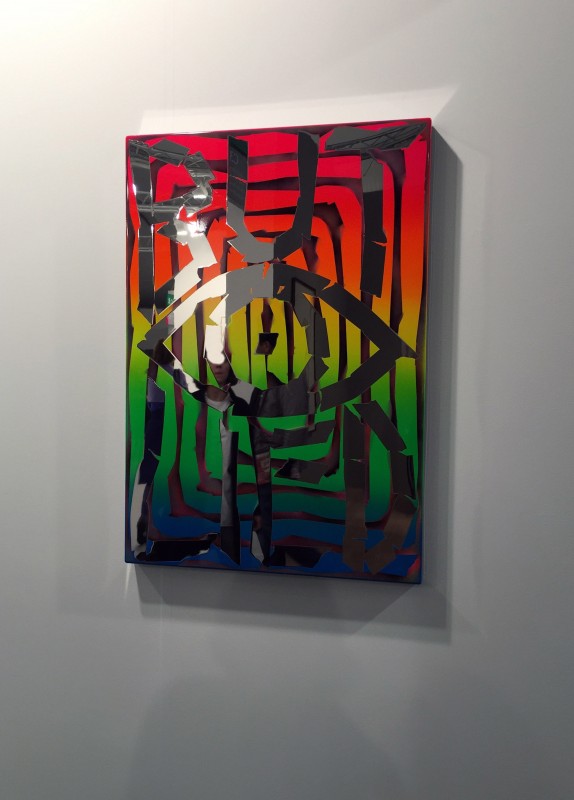
Installation view of Eddie Peake at Lorcan O’Neill Gallery. Photo by Robert Strang
The official award for ‘Instagram Artwork’ of the Fair (decided by me) goes to a Mark Leckey piece at Galerie Buchholz. Their unit had a huge inflatable Felix the Cat propped up in the corner. This was by far the largest work on display at this year’s Frieze and by far the most photographed and posed with. Although this work gains a lot of attention, its publicity does deter most visitors from engaging with Leckey’s deeper meaning of worship and offering.
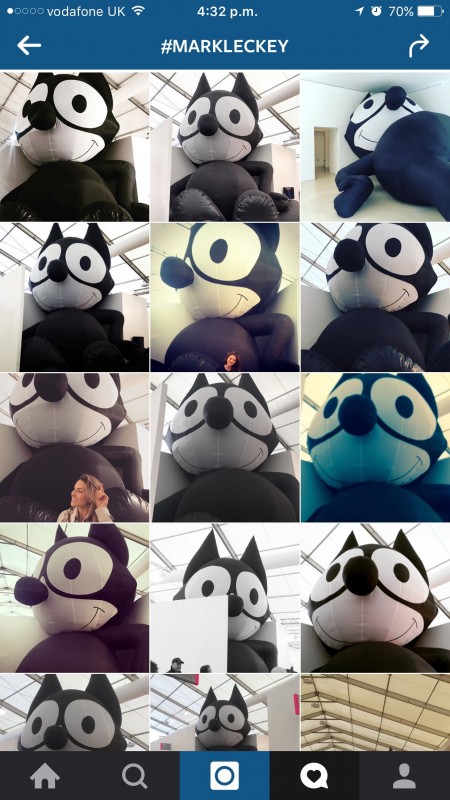
Mark Leckey, “Inflatable Felix,” 2014. Screen shot from Instagram
The Sunday Painter showed Samara Scott’s work, Lonely Planet II (2015), consisting of a rectangular pool of water filled with detritus such as nail varnish, spring onions, wood and wine with a light layer of spray paint float on top. The work feels like the display of all the scum and rubbish that has been used to make these works that hang throughout the whole of Frieze.
Now Frieze is gone again. Another year and another set of emotions to consider in our inevitable long term relationship, because I think we both know that neither of us is going to leave the other one: we were made for each other. #LongLiveFriezeArtFair
